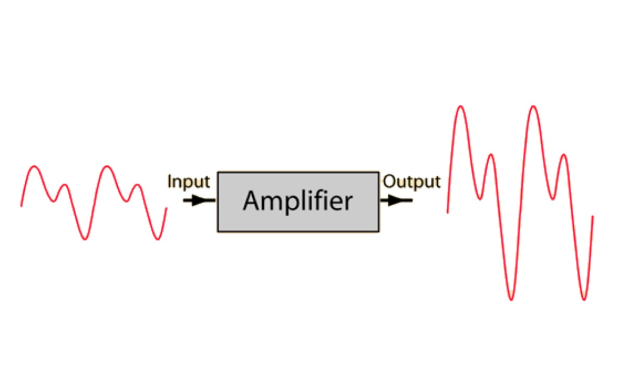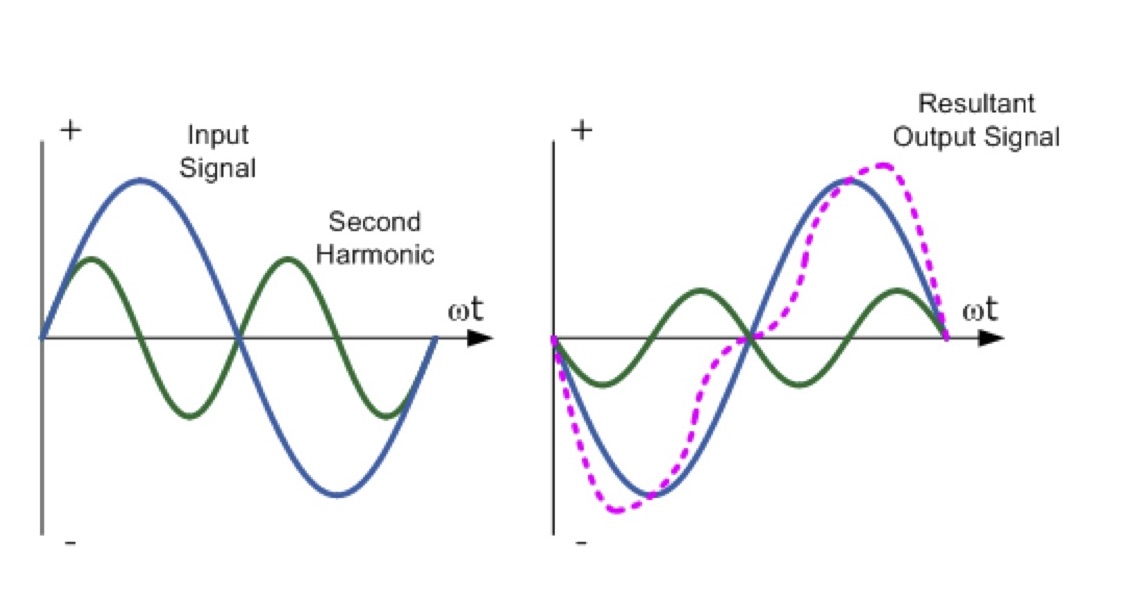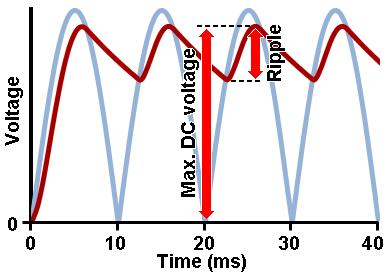Thanks for stopping by my site. Check out the video below to hear my latest album, recorded live with my Quilter MicroPro running clean effects in an A/B set up with my Trainwreck Express clone.
The secret is out about Quilter amplifiers. Guitarists seeking reliable tube tone in a compact and lightweight package have eagerly adopted this new line of amplifiers and flooded the market with used tube amps. I’m one of them. If you want to buy my Fender Blues Jr, send me a message. But something tells me you’ll end up buying a Quilter like everyone else.
My goal isn’t to convince you that Quilters sound good–you can just read one of the dozens of reviews that praise their sound and performance. Instead, my goal is to explain how Quilter amps can sound as good as tube amps while being so tiny and weighing so little.
Buckle Up for a Long Read–Or Just Glance at the Next Paragraph
Based on information gleaned from obscure forum boards, discussions with engineers, and Pat Quilter’s own patent applications and statements, I’ve written a detailed–yet accessible–explanation of Quilter’s amp design. But if you’re in a rush, here’s the short answer:
- Lightweight switch mode power supply–Converts AC current from the power outlet into DC current for use in the amp’s circuit while saving lots of weight and space
- Analog overdrive shaping circuit–The preamp features several components that replicate the harmonic overdrive, clipping distortion, tube sag, and bias shifting of the classic tube amps we all love (and hate because they are heavy and break all the time)
- Lightweight and efficient class D power amp–The amp puts out 100w per channel at a fraction of the weight and energy loss of a traditional tube amp of comparable power
- Speaker feedback system–A voltage feedback loop allows the overdrive shaping circuit and power amplifier to react to the speaker’s behavior, and enables the power amplifier to have a low speaker damping factor
My Quilter MicroPro Mach 2 combo was designed by Pat Quilter: a college dropout, renaissance man, and legendary audio equipment designer working out of Orange County, California. In the late 1960s, Quilter began building solid state bass and guitar amps, but his business soon fizzled out because–contrary to his expectations–tube technology remained the preferred choice of professional musicians.
Consequently, Quilter and his partners reoriented their business towards the design and production of power amplifiers. Over several decades, they built the highly successful QSC brand, whose products are found in most movie theaters and in many large concert venues across the world. Upon Quilter’s retirement form QSC in 2011, he decided to get back into the business of building guitar and bass amplifiers.
Most people who encounter Quilter’s amplifiers are amazed. These little amps punch far above their weight and size. My Quilter, for example, weighs 19 pounds and fits under the seat in front of me when I fly. Yet it is louder than a 50 pound, 40w tube amplifier. Furthermore, Quilter amps are reasonably priced, exceptionally reliable, and–according to whom you ask–they sound anywhere from decent to incredible.
Before We Begin–How Do Guitar Amplifiers Work?
When you pluck the strings of an electric guitar, their vibrations cause the wire coils in the pickups to generate a minuscule electric signal. The waveform of the electric signal is roughly equivalent to the physical waveform (or vibrations) of the strings. A guitar amplifier takes this weak electric signal, and boosts it to a power level that can drive a speaker.

Source : http://hyperphysics.phy-astr.gsu.edu/hbase/audio/amp.html
Tube and classic solid state guitar amplifiers are either Class A, B, or AB. They function by running the electric current from the wall through a power supply, which bumps the current to levels that can drive the tubes (or transistors in a solid state amp). Along with a diverse cast of transformers, capacitors, resistors, and transformers, the tubes and transistors shape the current from the wall until it’s an amplified version of the signal coming from the guitar.
How Is a Quilter Different from Other Guitar Amps?
First of all, I want to address the most common misconceptions about Quilter amps. They are not digital modeling amps (such as Line 6 or Blackstar amps), but they do contain a few computer chips. Nor are they classic solid state amps, although they do contain transistors. Instead, Quilters contain a switching power supply, an analog overdrive and tone shaping circuit, and a Class D power amplifier. And no, D does not stand for Digital.
Instead of using a circuit of heavy and often unreliable electric components, a Class D amplifier does the following to amplify a guitar signal:
- The guitar’s signal passes through a comparator
- The comparator compares the guitar signal to an automatically generated, constant triangle wave signal
- Whenever the guitar signal is instantaneously higher in level than the triangle wave, the comparator output goes positive. When the audio signal is instantaneously lower than the triangle wave, the comparator output is negative.
- The resulting chain of binary pulses creates a square waveform signal, where the pulses are proportional in width to the audio signal’s instantaneous level.

Source: https://pdfserv.maximintegrated.com/en/an/AN3977.pdf
- The square waveform signal is fed into transistors that function as binary gates, switching at a rate of hundreds of kHz.
- The output signal from the transistors is an amplified version of the square wavelength signal produced by the comparator
- This signal passes through a filter that removes the high frequencies and sharp corners of the square waveform, reconstructing the sinusoidal shape of the original input signal
What Are the Advantages of Class D Amplifiers?
Class D amplifiers are light, compact, efficient, powerful, and generate very little heat. Tube and classic solid state circuits, on the other hand, are heavy, comparatively cumbersome, and very inefficient. In these older designs, current is always passing through components that are in partial conduction, thus generating resistance, or energy loss.
Most of the energy loss in classic amp designs occurs because of the need to keep the power tubes operating in their linear range. To function optimally, tubes need to be at a certain temperature–this is why you need to warm up a tube amp before you play it. Most of the power draw of tube amps goes towards keeping the tubes hot, as opposed to amplifying the guitar signal.
Class D amps function at around 90% efficiency, meaning that only about 10% of the energy put into them gets released as heat. Classic guitar amplifiers convert anywhere from 70% to 90% of the energy they draw from the wall into heat. To get rid of all this heat, these amps need a spacious lay out, heat sinks, or even fans. Class D amps don’t have this problem, so they can be much more compact. This is why Class D amplifiers power the speakers of your smartphone.
A Switching Power Supply Further Reduces Weight and Heat Loss
The role of the power supply is to turn the current from the wall into electric signals that are usable by the amp’s circuit. Different amp designs have different current requirements, but one thing most power supplies have in common is that they are big and heavy. The Quilter amplifiers sidesteps this problem.
Switchmode power supplies use transistors that switch at blindingly fast rates to turn wall current into an ultra high frequency AC signal. This ultra high frequency signal enables the use of a small and light power transformer. Traditional power supplies feed low frequency wall current into the power transformer, which must be rather large and heavy to avoid core saturation.
Another advantage of a switching power supply is that it can handle a wide range of current, voltages, and frequencies. Unlike amps with traditional, passive power supplies, the Quilter doesn’t need a transformer when you switch from 110v to 220v wall current. And when you play in a venue with a shaky electrical system, your amp remains unaffected by swings in current.
The use of switching power supplies is by no means a revolutionary–Walter Woods included switching power supplies in the bass amps he designed and built in the 1970s. Incidentally, he was also one of the first to incorporate a Class D power amp into an instrument amplifier design.
Quilter’s Preamp Circuit Emulates Tube Tone and Overdrive
Unlike a tube equipped Class A, B, or AB amplifier, a desirable tone is not an inherent byproduct of the Class D amplifier design. The Class D amp is merely an efficient way of amplifying an audio signal. For this reason, the Quilter needs to use a complex preamplification circuit to mimic the warm, responsive, and progressively overdriven sound that characterize tube amplifiers.
According to Pat Quilter’s patent application, his analog preamp circuit contains the following elements:
- Even harmonic generator–Harmonics determine the tonal attributes of a sound. A perfect sine wave at 220Hz will sound like an A, but a very boring one. Adding harmonics to it–frequencies of 440Hz (2d harmonic/ 1st octave), 660Hz (3d harmonic/ perfect 5th), 880Hz (4th harmonic/ 2d octave), etc.–will give that A note unique tonal characteristics. A tube amplifier does this on its own, notably through signal clipping, a phenomenon that is explained in the next paragraph. The even harmonic generator adds even harmonics to the signal when the next stages in the circuit are close to the clipping point. This gives the Quilter a classic tube overdrive sound.

Source: http://www.electronics-tutorials.ws/amplifier/amp_4.html
- Soft clipping cell–Clipping occurs when the increasing amplitude of an AC signal hits the voltage limit of the circuit. The top and bottom of the sine wave get clipped at both the negative and positive voltage limits, which in practical terms results in distortion, added harmonics, and sustain. There are two flavors of clipping: symmetrical (where the positive and negative values of the signal are clipped equally) or asymmetrical. Asymmetrical clipping adds both odd and even harmonics while symmetrical clipping adds only odd harmonics. In Quilter’s circuit, the even harmonics are supplied by the harmonic generator, so the soft clipping cell primarily produces odd harmonics (emphasizing the lower ones, because high odd-order harmonics produce a muddled sound). The soft clipping cell also ensures that the clipping of the signal has a gradual onset so that harmonics are present even when the amp is lightly overdriven.

Source: http://blackstoneappliances.com/dist101.html
- Sag controller–In a push/pull, or Class AB circuit, the amplifier draws more current from the power supply as the power output increases. This means that when a guitarist “cranks” the amp, the current passing through the rectifier tube increases, which in turn increases its resistance. The rectifier tube doesn’t just convert AC power into DC–it also provides voltage to the plates of the other tubes in the amp. As the rectifier tube’s resistance increases, the amount of voltage it sends to the other tubes’ plates decreases slightly. This slightly decreases the amp’s output (hence the term sag), which has a compressing effect on the output signal. Furthermore, the decreased voltage in the power tubes hastens the onset of clipping.

Source: http://www.valvewizard.co.uk/smoothing.html
- Zero crossing processor–The zero crossing processor emulates the effect of temporary bias shifting in an AB class amp’s power stage when the input signal is particularly strong. In practical terms, this has the effect of keeping the amp’s sound distorted for a few moments after the user “hits” the guitar hard. The zero-crossing processor also blanks out a portion of the signal that crosses zero value, which according to Quilter adds sizzle and richness to the distorted sound and allows rapidly played notes to be distinguished from one another. This phenomenon does not occur in all tube amps. Some amps designs, such as those by Howard Dumble, even seek to minimize this effect. While there is disagreement as to whether bias shifting and crossover distortion are desirable, there is no denying that these are inherent features (or drawbacks) of many popular tube amp designs.
The Quilter amp user can control these effects, but not directly. Instead, the amp has several presets that combine these effects into familiar amp tones. The overall level of these presets may be adjusted through the gain and boost controls. Before the preamp signal goes to the Class D power amplifier, it passes through a user-adjustable EQ stage and a potentiometer that determines master volume.
Other amplifier designers, notably Peavy and Roland, have used similar analog circuits to simulate tube overdrive. The difference is that Quilter’s design connects this analog circuit to a Class D amplifier that offers much more headroom than the solid state power amplifiers used by other manufacturers. The added headroom–or ability to handle stronger voltages–is central to the success of Quilter’s tube amp emulation, because tube amps create significant voltage spikes.
Quilter Amps Reproduce a Tube Amp’s Louse Coupling to the Speaker
The output signal of an amplifier drives the speaker. This AC signal passes through the speaker’s coil, which is housed in a magnetic cylinder. The signal causes the coil to generate a magnetic field. As the output signal changes, the magnetic field changes too, which causes the coil to move at different rates. The coil is attached to the speaker’s diaphragm, which pushes air in frequency with the signal from the amplifier’s output. The result is epic guitar sounds.
The speaker’s resistance to the amplifier’s output signal is called impedance, and its value depends on a host of fixed and variable factors, most notably the output signal’s frequency. 
Source: http://www.electrosmash.com/marshall-mg10
The speaker’s impedance generates an electrical current in the output circuit in which the amplifier itself acts as a resistance. Solid state amps have very low resistance (or impedance, as it is called in an AC circuit), so the speaker’s inertia gets dampened by the current that it generates. Since the speaker is not allowed to “ring,” it only reproduces the signals sent to it by the amplifier.
A tube amplifier, on the other hand, has a high impedance value because the current generated by the speaker must pass through the amp’s output transformers. This means that the current generated by the speaker loses its strength and does not dampen the inertia of the speaker cone. This low damping factor, which allows the speaker to move independently of the amp’s control, results in a low fidelity reproduction of the amp’s signal–which incidentally produces the familiar warmth and grit we appreciate from tube amps.
The Quilter’s feedback circuit routes current from the speaker back to both the power amplifier and the overdrive shaping circuit. The circuit is designed to accomplish four things:
- It replicates the high impedance load that a tube amp presents to the current generated by the speaker
- It allows the power amp to produce voltage spikes where the speaker’s impedance is high
- It enables the overdrive shaping circuit to react to the speaker’s behavior, thus reproducing the tone of a tube amp pushing against speaker damping
- The circuit’s speaker protection feature cuts the amplifier’s output when the speaker reaches its performance limits, thus avoiding irreparable damage
The Parts Are Greater Than the Whole
Most of the features discussed above have been used in earlier amp designs. But Pat Quilter may be the first amp designer to have combined them all into a single, funny looking package. As a result, he has come closer than anyone else to designing an amplifier that credibly emulates the tube sound. Let’s hope he doesn’t retire again before pushing the envelope even further.
For more info, read Pat Quilter’s patent: https://www.google.com/patents/US20130136278

Leave a comment